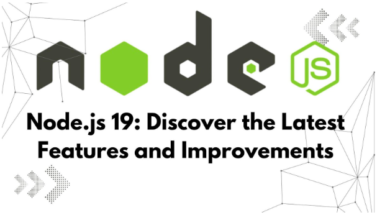How to Create an NFT Marketplace on Ethereum

Learn to build an Ethereum NFT marketplace with essential components, development, and security tips.
NFTs (Non-Fungible Tokens) are unique digital assets stored on blockchains like Ethereum. They represent ownership of digital art, music, or virtual items. Ethereum, with its smart contract capabilities, provides a robust platform for creating decentralized NFT marketplaces where users can mint, trade, and sell digital assets securely.
Key Components of an NFT Marketplace
An NFT marketplace requires several critical components:
- Storefront: A visually appealing platform where users can browse and explore NFTs. It showcases featured collections, trending NFTs, and newly listed assets.
- Search and Filters: To improve user experience, marketplaces should provide easy-to-use search functionalities and filters (by price, rarity, category, etc.), helping users find specific NFTs or types.
- Listing and Minting: The marketplace must allow creators to mint (create) new NFTs and list them for sale. The process involves uploading digital content, adding metadata, and creating a blockchain record of ownership.
- Bidding and Buying: The platform should support buying NFTs through fixed prices or auctions. Auctions can enhance user engagement by allowing competitive bidding for rare or valuable NFTs.
- Wallet Integration: A seamless connection with Ethereum wallets like MetaMask enables users to transact securely and interact with the blockchain.
- Smart Contracts: Underlying smart contracts handle ownership transfers, royalty payments to creators, and NFT minting. Smart contracts enforce the platform’s rules autonomously.
Development Environment Setup
To create an NFT marketplace, you’ll need a basic development environment, including:
- Node.js for backend operations.
- Ethereum development frameworks like Truffle or Hardhat to write, compile, and deploy smart contracts.
- MetaMask wallet for users to interact with the marketplace, handle transactions, and manage ETH.
Designing the Frontend
For the front end, use frameworks like React or Vue.js to design an intuitive user interface. Integrating blockchain interactions with the front end is handled using libraries like Web3.js or Ethers.js.
The frontend should feature:
- Homepage: Highlight top NFTs, new arrivals, and featured collections.
- User Profiles: Display users’ owned NFTs, purchase history, and minted NFTs.
- Transaction Flow: Allow users to mint, buy, or sell NFTs through wallet integration.
- Search and Filter Options: Let users search through various categories and apply filters to refine their browsing.
Storing NFT Metadata
NFT metadata, including images and descriptions, is typically too large for the blockchain itself. You can use decentralized storage solutions like IPFS (InterPlanetary File System) to store metadata and link it to the smart contract. Services like Pinata or Infura help manage and store NFT files in a decentralized manner.
Deploying and Testing
Once you’ve developed the smart contracts and frontend, deploy the platform on a testnet like Rinkeby to simulate and test functionalities such as minting, buying, and selling NFTs. Ensure that transactions work seamlessly, and wallets are properly integrated.
After thorough testing, you can deploy the NFT marketplace on the Ethereum mainnet.
Security Considerations
Security is critical when dealing with blockchain assets. Have your smart contracts audited by professionals to ensure they are secure, reliable, and free from vulnerabilities. This will build trust in your marketplace among users.
Launching the Marketplace
After testing and security verification, you can officially launch your marketplace on the Ethereum mainnet. At this stage, you’ll need to decide how the marketplace will earn revenue. Common methods include:
- Listing fees: Charge creators a fee to list their NFTs.
- Transaction fees: Take a small percentage of each sale or auction.
- Royalty fees: Implement smart contracts that distribute a percentage of resale earnings to the original creator.
Marketing and Growth
Promote your NFT marketplace through social media, influencer partnerships, and targeted ads within the crypto community. Offering exclusive NFT drops or rewarding early adopters can help create a buzz and drive user engagement.
Building an NFT marketplace on Ethereum requires a deep understanding of blockchain, smart contracts, and user experience design. By setting up essential components like a robust storefront, wallet integration, and a secure transaction system, you can create a thriving platform where users can trade digital assets securely and efficiently. With the growing interest in NFTs and blockchain, now is the perfect time to build a marketplace that caters to the rising demand for digital assets.





